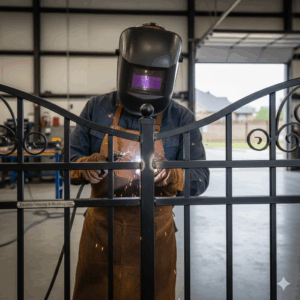Introduction: Dubai’s Digital Diversity
Dubai isn’t just a city—it’s a global melting pot. With over 200 nationalities living and working in the UAE, building a website that speaks only one language is like opening a store with signs only a fraction of your customers can read.
If you want to connect, convert, and grow in Dubai’s competitive market, creating a multilingual website is no longer a luxury—it’s a necessity.
In this guide, we’ll walk you through how to plan, build, and maintain a multilingual site tailored for Dubai’s diverse audience. Plus, we’ll explore how working with the right website development company Dubai businesses trust—like Devherds—can make this process easier, faster, and more professional.
Why Multilingual Websites Matter in Dubai
Let’s break it down. Dubai’s population includes:
-
Emiratis who primarily speak Arabic
-
Expats from India and Pakistan who speak Hindi, Urdu, and English
-
Residents from the Philippines, China, Russia, Europe, and beyond
If your website only speaks English, you’re limiting your reach.
Benefits of Going Multilingual:
-
Better engagement with local and international users
-
Boosted trust and credibility
-
Increased conversions and ROI
-
Improved SEO for regional keywords
For Dubai’s multicultural market, language is currency.
Step 1: Know Your Target Audience
Before you start translating pages, know who you’re targeting.
Ask yourself:
-
Who visits your site? Locals, expats, tourists?
-
What languages do they prefer?
-
Which region-specific keywords do they use?
For example:
-
Arabic is essential for targeting locals and government entities
-
English is universal in Dubai and a must-have
-
Hindi or Urdu may help you connect with South Asian consumers
A professional web development company Dubai based—like Devherds—can help you conduct a proper audience analysis to get this step right.
Step 2: Choose the Right Platform for Multilingual Support
Some platforms handle multilingual websites better than others.
Popular Options:
-
WordPress: With plugins like WPML or Polylang, WordPress is a great CMS for multilingual websites.
-
Custom CMS: Tailored solutions offer more control and scalability.
-
Shopify or Wix: Good for smaller eCommerce stores, but limited for complex multilingual needs.
If you’re working with a web design company Dubai businesses recommend, they’ll guide you on what suits your website goals best.
Step 3: Plan Your Language Structure (URL Strategy)
You’ve got three main options for organizing language versions:
1. Subdirectories
Example: example.com/ar/ or example.com/en/
-
Good for SEO
-
Easy to manage
2. Subdomains
Example: ar.example.com
-
Clear structure, but may split SEO authority
3. Separate Domains
Example: example.ae (Arabic) and example.com (English)
-
Full independence, but more expensive and complex
For most Dubai-based businesses, subdirectories are the sweet spot.
Step 4: Get Professional Translations (No Google Translate!)
Machine translation might work for a quick text message, but not for your business website.
Why?
-
It lacks context
-
It misses cultural nuances
-
It damages your credibility
Hire native speakers or use translation professionals. If you’re working with a website developer in Dubai, they often partner with native translators to help you get accurate, polished content.
Pro Tip:
Cultural sensitivity is as important as language. A well-translated joke in English could be offensive in Arabic—know your context.
Step 5: Design with Language in Mind
Languages don’t just translate—they reshape design.
Key Considerations:
-
Arabic is RTL (Right-to-Left): Your entire layout must mirror for Arabic pages.
-
Text length varies: Some languages use more space than others.
-
Fonts and icons must support all characters (including Arabic script).
-
Consistent branding: Your look and feel should be seamless across languages.
A web design company in Dubai with multilingual experience—like Devherds—ensures your design supports every language gracefully.
Step 6: Enable Easy Language Switching
If switching between languages is confusing or hidden, users will bounce.
Best Practices:
-
Use a visible language switcher in the header or top navigation
-
Show native language names (e.g., English, العربية)
-
Keep users on the same page after switching (don’t send them to homepage)
Step 7: Optimize for Multilingual SEO
Each language version needs its own SEO strategy.
Must-Do SEO Tactics:
-
Use hreflang tags to tell Google which version to show to whom
-
Translate meta titles and descriptions
-
Localize keywords—don’t just translate them
-
Submit separate sitemaps for each language version
-
Build backlinks to each version separately
This is where an experienced web development company in Dubai can really help. Devherds, for example, includes multilingual SEO planning as part of their website development services in Dubai.
Step 8: Test Everything—On Every Device
Before launching your multilingual site, test it:
-
On desktop and mobile
-
In every supported language
-
With real users if possible
What to Check:
-
Are all translations correct?
-
Are buttons and layouts working in RTL?
-
Do forms and CTAs work in every version?
-
Are images and icons culturally appropriate?
Step 9: Don’t “Set and Forget”—Maintain It
Websites evolve. So do languages, trends, and content.
Ongoing Maintenance Includes:
-
Updating translations with new content
-
Checking for broken links in each language
-
Monitoring traffic behavior on each version
-
Keeping plugins and CMS up to date
Devherds, the best web development company in Dubai, offers maintenance packages to handle multilingual updates so you don’t have to worry.
Challenges to Expect (And How to Solve Them)
1. Content Management Becomes Complex
Solution: Use CMS tools that sync across languages and reduce duplication.
2. SEO Can Be Tricky
Solution: Work with multilingual SEO experts and use best practices like hreflang.
3. Increased Costs
Solution: Focus on priority languages at launch, then expand.
4. Different Legal & Cultural Norms
Solution: Localize not just the language, but the messaging and imagery too.
Why Work with a Dubai-Based Web Development Team
You might think of outsourcing abroad, but here’s why staying local pays off:
-
Deep understanding of Dubai’s multicultural audience
-
Familiarity with Arabic UX requirements
-
Better support and timezone alignment
-
Up-to-date with UAE digital regulations
When you work with a web development company Dubai like Devherds, you’re tapping into both technical excellence and cultural insight.
Why Devherds Is Your Multilingual Website Partner
Let’s be real—not all developers are equipped to handle multilingual websites. But Devherds has built dozens of multilingual platforms for clients across Dubai and the Gulf.
What You Get with Devherds:
-
Custom design with RTL & LTR support
-
SEO-optimized language structures
-
Native-language translation support
-
Integrated language switchers and UX testing
-
Ongoing support and performance monitoring
This makes Devherds the go-to choice for website development services in Dubai.
Conclusion: Speak to Everyone, Win the Market
In a city as diverse as Dubai, a single-language website is like opening a shop with one locked door.
A multilingual website welcomes everyone, reflects your brand’s global thinking, and gives you a competitive edge. From planning and translation to SEO and ongoing updates, the process is manageable when done right—and essential for long-term success.
And if you’re not sure where to start, team up with Devherds, the best web development company in Dubai. They’ll help you build a website that speaks everyone’s language—literally and figuratively.








